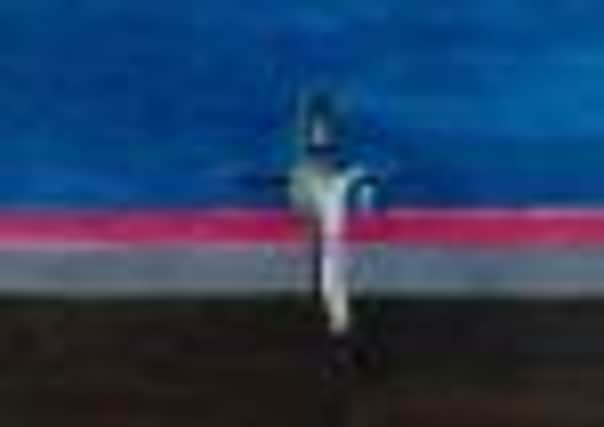Craigie Aitchison’s auction could be a triumph


But not when you consider who it belonged to. The 1961 statement car and the other items are among the wordly goods of Scots artist Craigie Aitchison that will be sold at auction next week.
The sale of the contents from the London studio of Aitchison, who died in 2009 aged 83, provides surprising insights into how this shy but eccentric artist lived and worked.
Advertisement
Hide AdAs well as paintings, objects up for auction include kitsch ornaments, a bright red guitar given to him by fashion designer Paul Smith, a bed designed and built for him by the artist Euan Uglow, as well as the car and the bespoke suits delivered after he died. The unfinished painting found on his easel after his death shows the Stirlingshire estate where he spent holidays as a child, a Golly, one of Aitchison’s favourite subjects, and a sketch of the Dunmore Pineapple, the iconic folly which once belonged to his grandfather, in the background.


The total value of the sale is estimated at between £300,000 and £450,000.
Aitchison was one of the country’s most successful artists, known for his vibrant colours, flat two-dimensional forms and icon-like compositions. His key subjects were crucifixions, still lives and his beloved Bedlington terriers.
Ross Thomas, the specialist in charge of the sale at Bloomsbury Auctions on 26 January, said it is unusual in featuring personal objects as well as art. “We wanted to give people an introduction to the thought processes behind the paintings and prints, and let them have an opportunity to acquire the props which went into the paintings.
“We don’t know why he was painting the Dunmore Pineapple when he died. This is a theme which has not appeared in his paintings before. It is more detailed than a lot of his work, perhaps he was looking at moving in a new direction.”
Graham Snow, an artist and friend of Aitchison who curated the sale, said: “He loved Scotland, although he didn’t often have exhibitions there. All his life, his paintings referred to Scotland.”
Advertisement
Hide AdThe sale contains a selection of the ceramics birds, dogs, crucifixes and other objects which covered every surface in Aitchison’s brightly coloured Kennington home. Snow said: “It looked like a complete jumble, but in fact they were very carefully chosen. A lot of people gave him objects as presents because they thought he liked them but he had a huge cupboard full of rejects.
“There were very particular things which were interesting to him, and it made no difference whether it was a 19th-century Chinese bowl [valued at £800-£1,200] or a Christmas tree decoration, it was to do with shape and colour.”
Advertisement
Hide AdAitchison was born in Edinburgh in 1926. His father, also called Craigie, was a defence lawyer who became Lord Advocate for Scotland in 1929. His son at first followed him into the legal profession but left to pursue a career in painting in the early 1950s.
The sale also includes family memorabilia such as his father’s deed box and a tiara worn by his mother on state occasions.
Snow says that Aitchison retained his father’s strongly socialist principles. “He was not a snob, although a lot of his friends were aristocrats. He really got on with everybody, some of his best friends were the people who would come to clean or walk the dogs.
“He had a very strong set of convictions. Politically, he was the best informed person I’ve ever met. He was also a very funny man. People thought he was a bit naive and would laugh at him a bit, but a lot of it was an act. He was extraordinarily intelligent, although it came out in a rather innocent way.”
One of the most striking pictures in the sale is a rare self-portrait dating from around 1980. Aitchison is believed to have slashed it to pieces after a visitor to the studio remarked that: “You flatter yourself.” It was later repaired by leading restorer Martin Wyld, another friend, but still bears the marks of the blade.
His flat, direct painting style divided critics. Brian Sewell once wrote of his work: “Their drawing is so weak, their substance so meagre... that were they by some 15-year-old in a comprehensive school they would not get him through an O-level examination”.
Advertisement
Hide AdMoira Jeffrey, art critic for Scotland on Sunday, said: “Craigie cut a very singular figure both in Scottish art and in London. He was somehow out of his time, but searching for art that was timeless.”
Snow said: “His paintings look very charming and colourful and easy, but he disliked people saying his work was primitive or naive. It’s not, it’s simple, and he would say that’s the hardest thing to do. It was far from effortless. The simplest thing is the most difficult to achieve.”
• The highlights of the sale will be on show at London Art Fair from 18-22 January, then at Bloomsbury Auctions (www.bloomsburyauctions.com) on 24 and 25 January